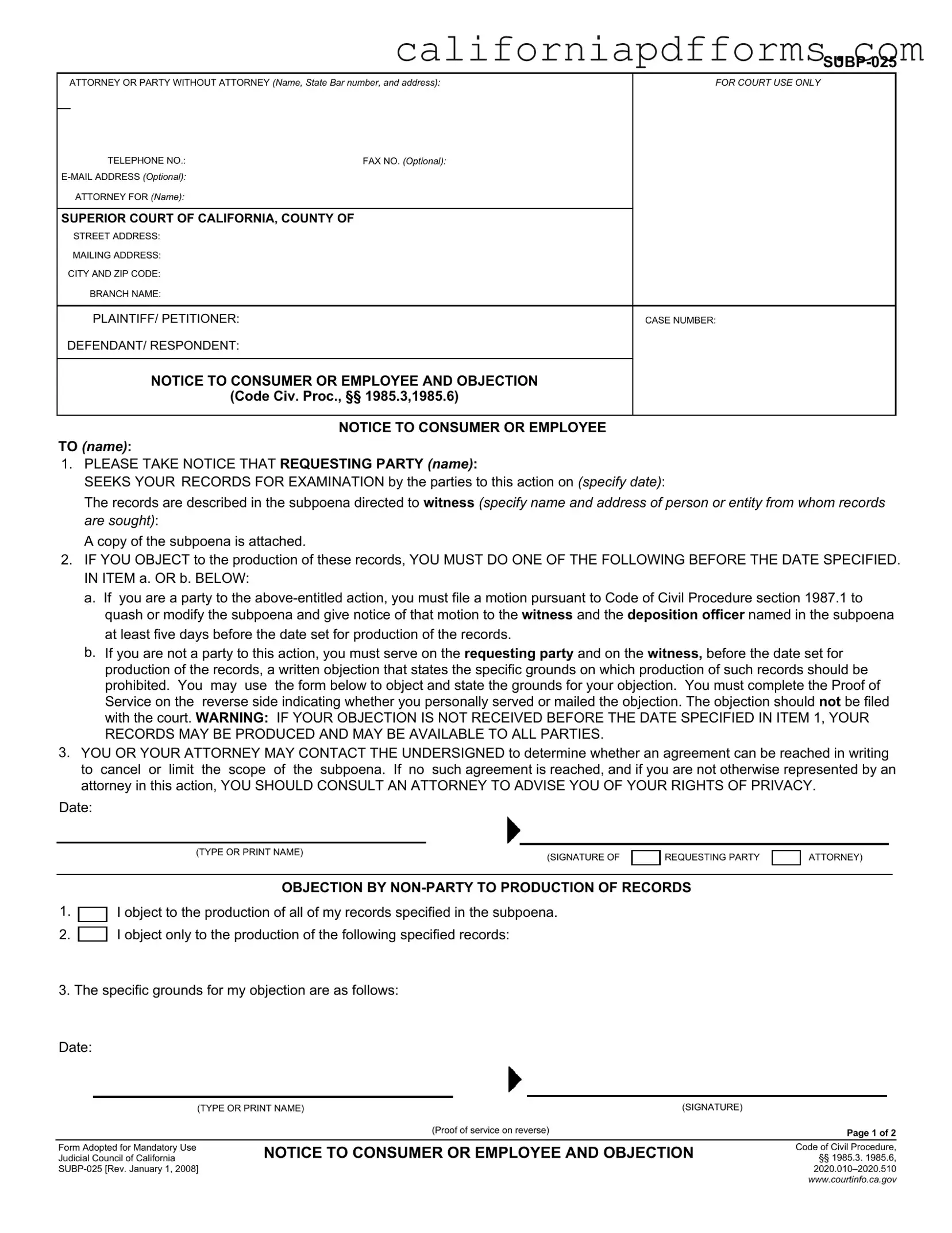The California Notice Consumer form is a legal document that notifies a consumer or employee that their records are being sought in a legal action. This form is used to inform individuals about the request for their records, outline their rights, and provide instructions on how to object to the production of those records.
This form is primarily used by parties involved in legal actions where personal records of a consumer or employee are being requested. If you are a consumer or employee whose records are being sought, you will receive this notice. Additionally, attorneys representing parties in the case may also use this form to fulfill legal requirements regarding notification.
What should I do if I object to the production of my records?
If you object to the production of your records, you have two options:
-
If you are a party to the action, you must file a motion to quash or modify the subpoena. This must be done at least five days before the date set for production.
-
If you are not a party, you need to serve a written objection to both the requesting party and the witness. This objection must clearly state the specific grounds for your objection. Use the form provided to help articulate your concerns.
It is crucial that your objection is received before the specified date, or your records may be produced without your consent.
What happens if I do not respond to the notice?
If you do not respond to the notice by the specified date, your records may be produced. This means that all parties involved in the legal action could have access to your records. It is important to take this notice seriously and respond appropriately to protect your privacy.
Can I reach an agreement regarding the subpoena?
You or your attorney can contact the requesting party to discuss the possibility of reaching an agreement. This agreement may involve canceling or limiting the scope of the subpoena. If you are not represented by an attorney, it is advisable to consult one to understand your rights and options.
Where can I find assistance if I have questions about this process?
If you have questions or need assistance regarding the California Notice Consumer form, consider consulting an attorney. They can provide guidance tailored to your specific situation. Additionally, local legal aid organizations may offer resources and support for individuals navigating this process.
